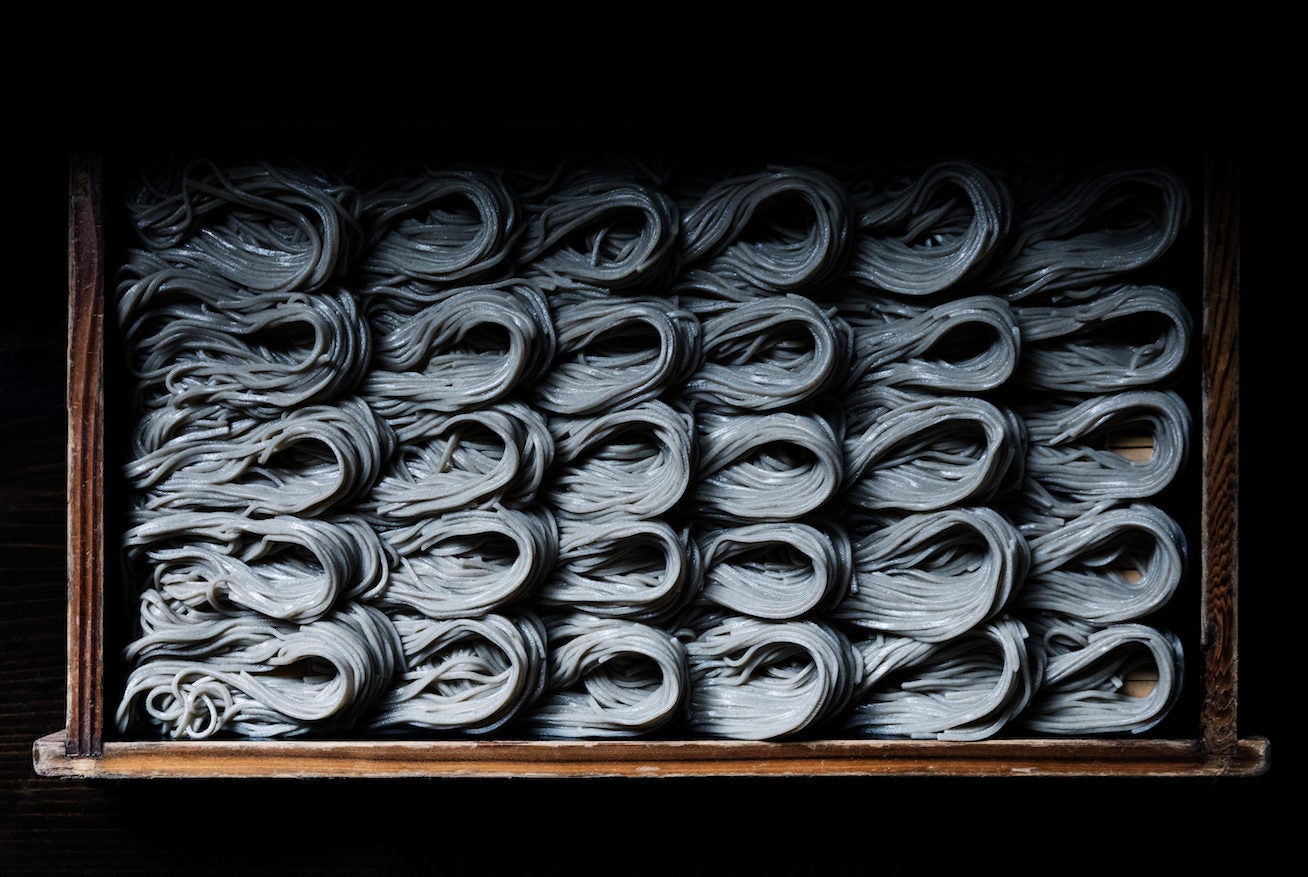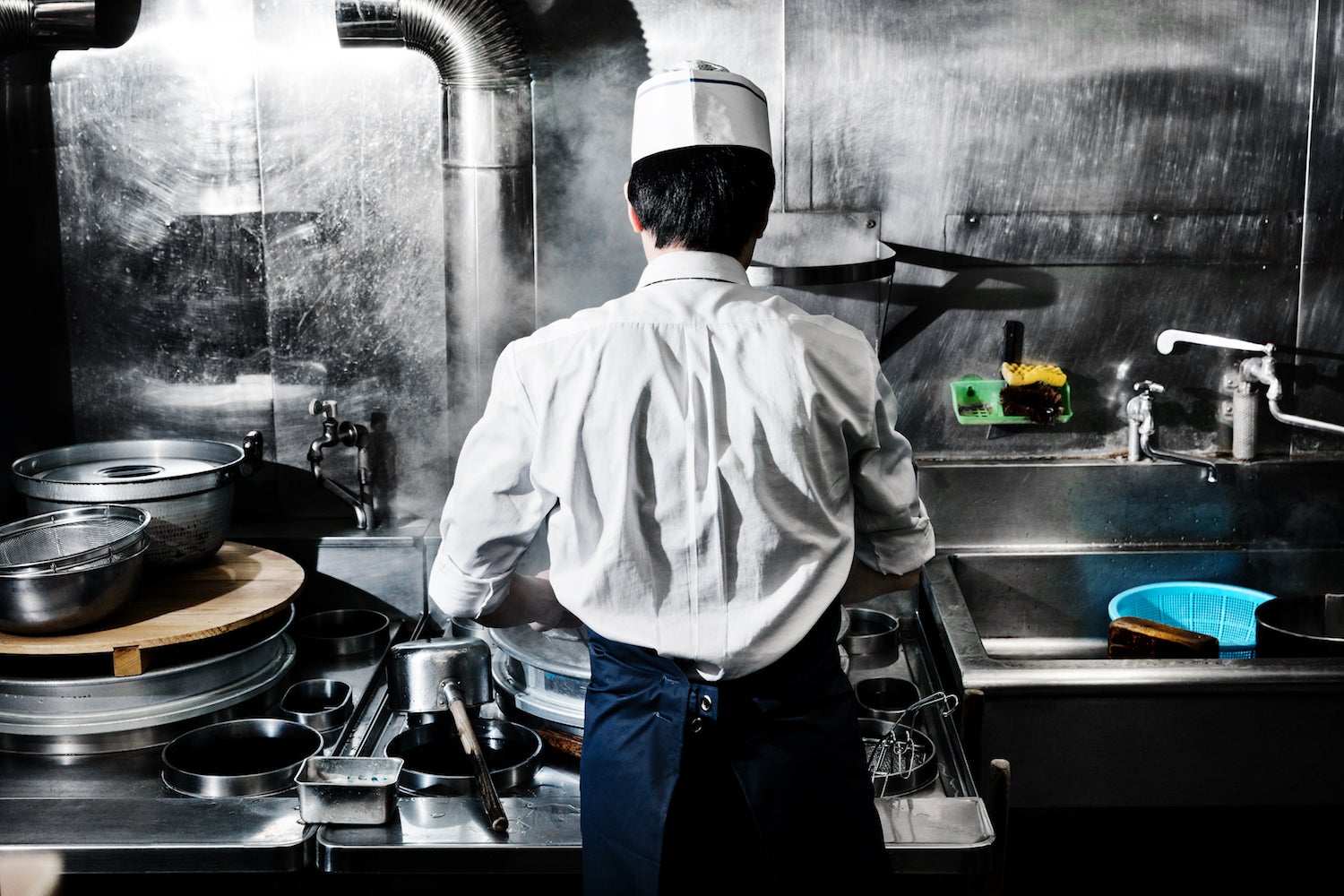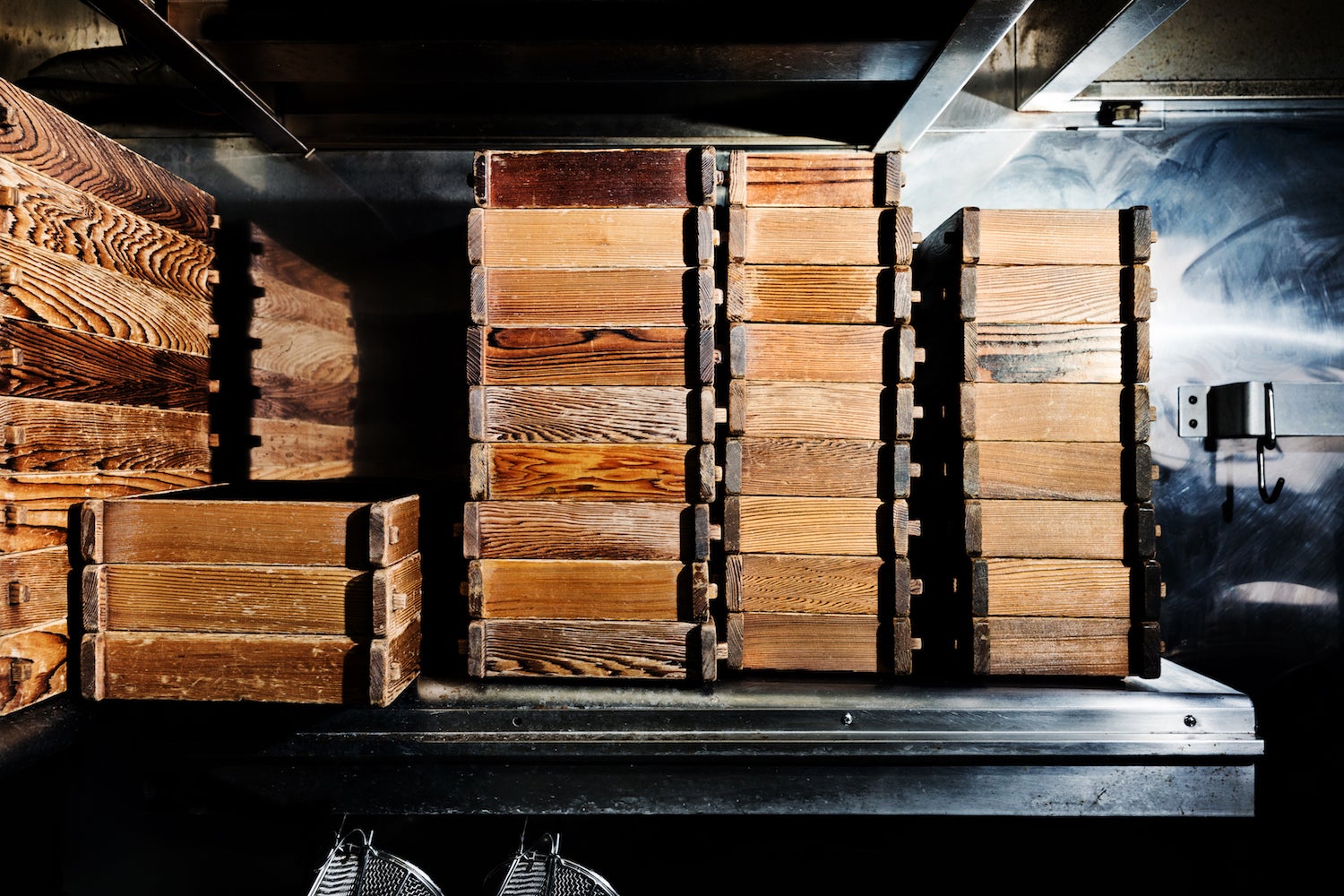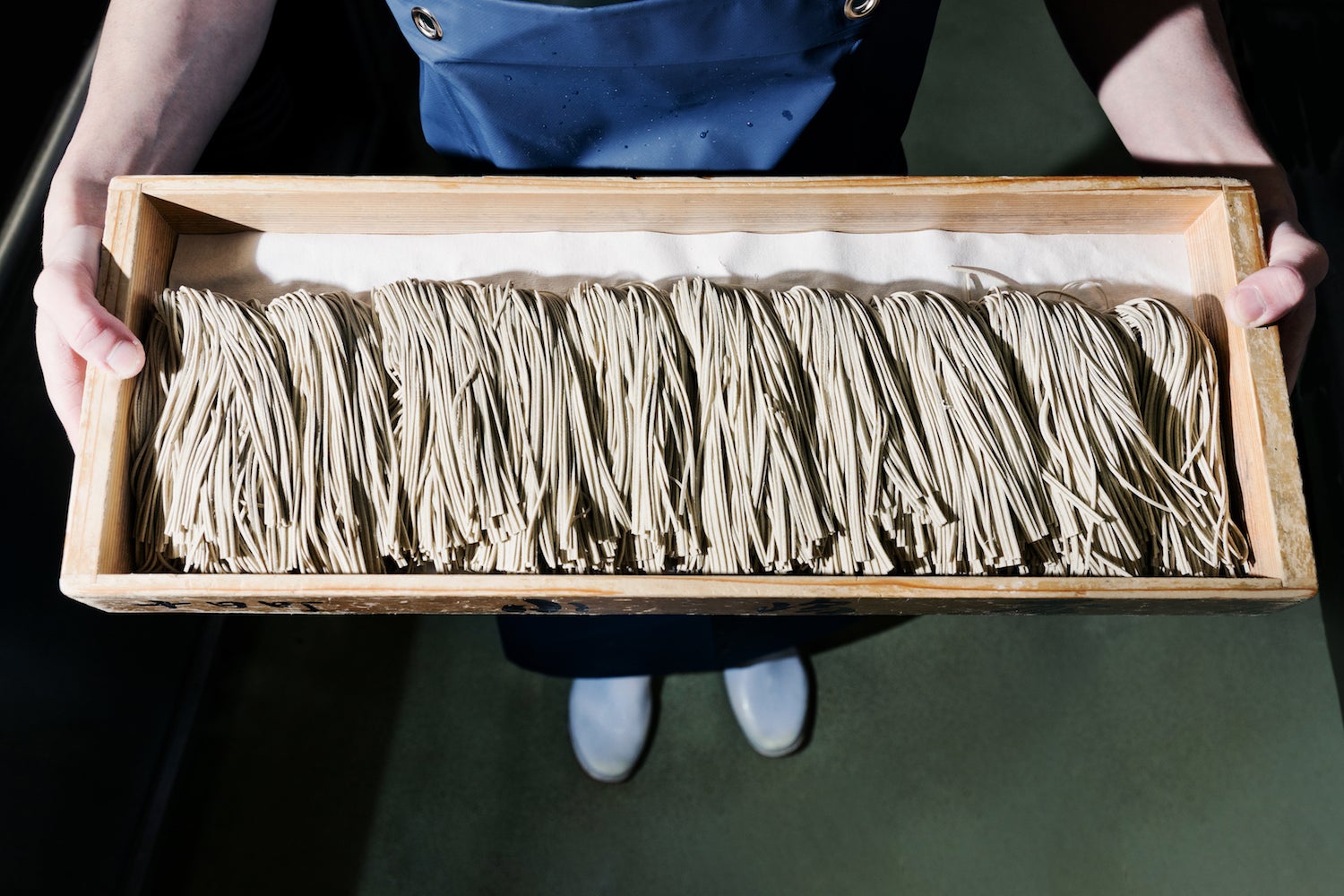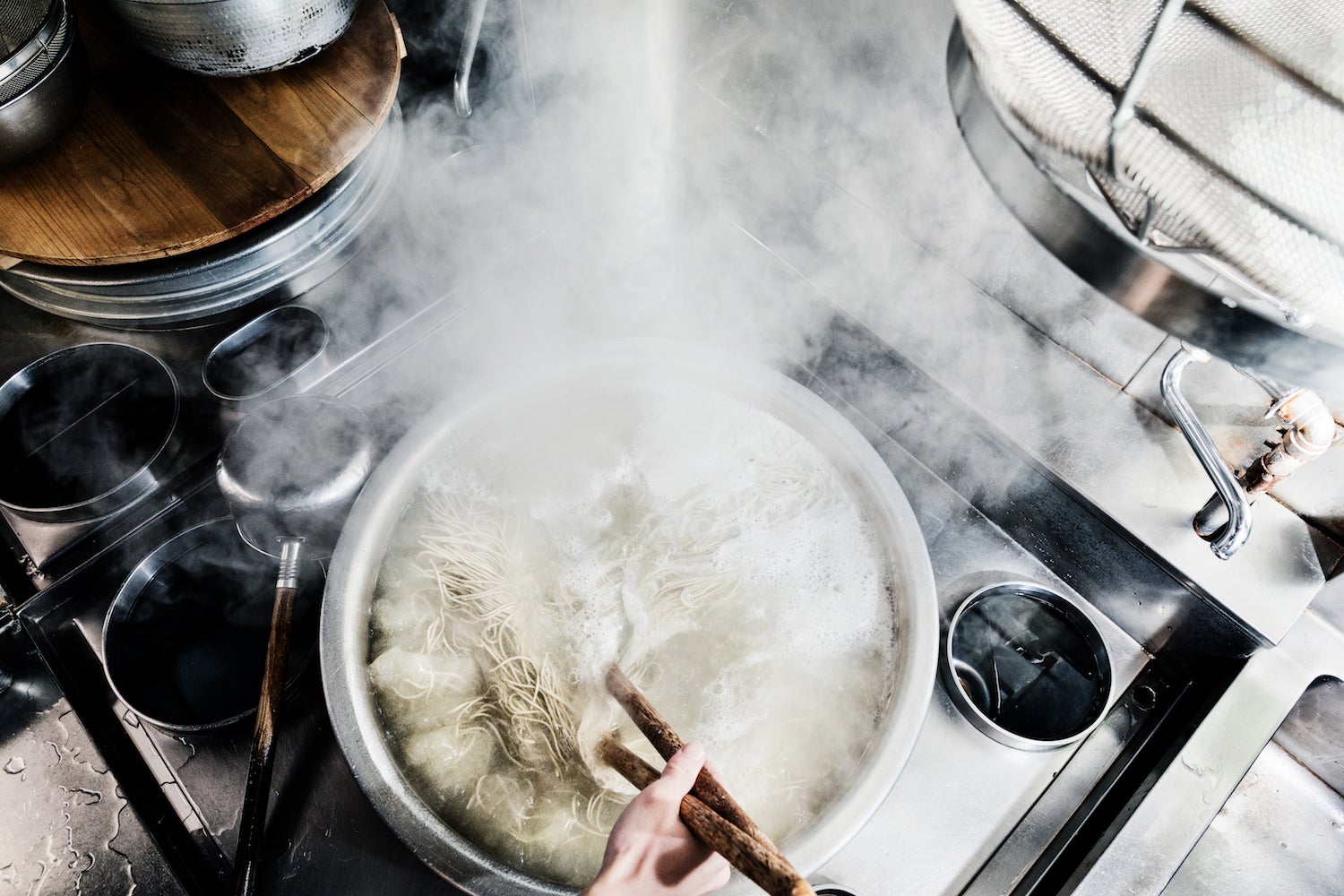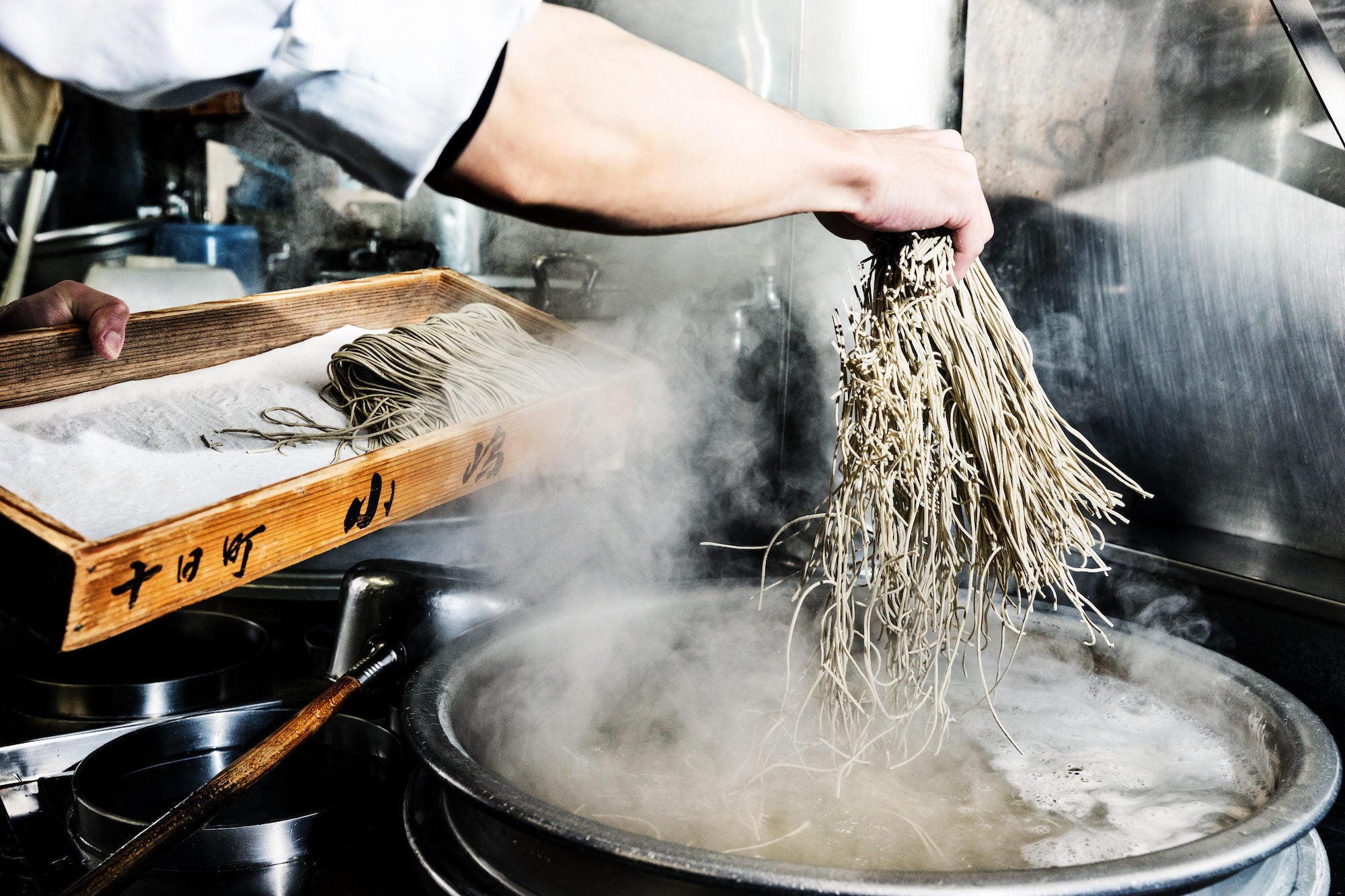
Understanding the Japanese concept of nodogoshi—“good feeling in the throat”—changed my perspective on soba.
It’s taken me nearly 20 years to realize that I’ve completely misunderstood basically everything about soba. During my younger years, prior to visiting Japan, soba was an affordable, grayish-brownish pantry item eaten with tasty mentsuyu (bonito and soy-based sauce)—a slightly more healthy, refined, and unexpected option than instant ramen.
My method of consumption was overindulgent and irreverent, as I often relied on soba as sustenance when my checking account lingered in the double digits. A packet of crude and boorish supermarket-quality soba, a bottle of premade mentsuyu, nori seaweed strips if I was feeling fancy, and neon-green, tubed wasabi promised instant gratification and an adequate nutritional payload—all for under ten bucks. I didn’t eat soba because I truly enjoyed it; I ate soba because it kept me alive.
And I would be lying if I claimed to know how to cook it properly.
Overcooking too many packs at one time; not shocking the noodles immediately, allowing them to become soggy; drowning the soba in mentsuyu like a mop in a bucket; wiping away the tears from third-degree nasal burns from excessive wasabi; testing the limits of my stomach. I was full. I was satiated. I avoided overdraft fees—this was how I disastrously ate soba in my younger bachelor days. It wasn’t until I ate soba in Japan that I realized how much I had disrespected what is deemed the soul food of Japanese culture. It was enough for any deceased soba enthusiast to turn in the grave.
In terms of meibutsu (the famous regional food in Japan), buckwheat soba had a slower journey to fame compared with the phenomenal rise of its flashier cousin, ramen. Buckwheat grains have been used as a source of food in Asia for over a millennium, but soba noodles in Japan were first recorded in the 16th century. Once regarded as the unpopular fast food of the working class, sold from yatai (mobile food carts) and to hungry patrons departing from the pleasure houses in red light districts, soba rose up as a fashionable and delicious food once the Meiji administration moved the capital in 1868 from Kyoto to Edo (the former name of Tokyo).
With soba being so prevalent in the Tokyo region, more and more Japanese began to understand that eating soba was a way of showing cultural pride for Japan. These simple yet precious gray-brown, sometimes white strands of carbohydrates made of nutty, stone-ground buckwheat berries, wheat grains, sea salt, and the finest water the Japanese motherland could provide, are dear to the Japanese people. Dear enough to draw tears of nostalgia from even the most stone-faced salaryman missing his favorite hometown soba. And it would soon be dear to me.
On a cold winter day in Tokamachi, Niigata, a prefecture known for producing some of the best rice, nihonshu (sake), and soba in Japan, my wife was craving some soba, and we ended up at Kojimaya, an almost century-old, shrine-like restaurant. Even after visiting Japan over a dozen times, I continually pledged my allegiance to ramen and udon over soba, like many Westerners. On this day, I thought I would be having yet another non-climactic meal of cold, gray-brown buckwheat strands, but I walked out with a fortified understanding of and new love for soba.
At Kojimaya and many soba houses throughout Japan, they serve inaka soba (country-style), which is made with unhulled buckwheat berries that are more flavorful and aromatic than seiro soba, which is white and made with the heart of the wheat berry. The type of soba noodle favored by Tokyoites is called ni-hachi soba, the Japanese term for 20/80 percent—or two parts wheat flour and eight parts buckwheat flour. While 100 percent inaka soba provides the most buckwheat-forward flavor, it lacks texture and elasticity, often breaking apart after sitting in a bowl of hot broth after a few minutes.
What sets Kojimaya and the city of Tokamachi apart from other regions in Japan involves an unlikely treasure from the sea and one man’s curiosity, creativity, and chance. Tokamachi is historically known as a textile town, renowned for producing silk for kimono and utilizing funori, a colorful, veiny algae extract, as a means for gluing, binding, and strengthening the silk threads of the woven kimono. With an abundance of funori, Kojimaya’s founder, Kojimaya Jutaro, one day in 1922 decided to experiment and fatefully infused 80 percent soba flour with 20 percent funori, instead of 20 percent wheat flour. Miraculously, this not only helped bind the soba together but also added elasticity and subtle oceanic umami. Funori helped make kimono weaving a signature of Tokamachi; it also helped put Tokamachi-style soba on Japan’s map.
Standing in the dining area of Kojimaya, I witnessed a gastronomic phenomenon unfolding before our eyes. The way Japanese people consume soba is startling. For a society that embraces strict rules, mores, and values, soba consumption maintains its own independence—the rules are written by the diner. Eating soba is as personal as it is a meditative self-ritual that removes the diner from all surrounding stimuli.
Unlike a raucous izakaya, there was dead silence punctuated by a series of sporadic tsurutsuru, the onomatopoetic Japanese word for the sound one makes during slurping. All the patrons at Kojimaya, despite age, sex, or class, are engaged in an unsynchronized ritual of heads bobbing up and down, hunched over their wooden soba trays (hegi) and short, ceramic mentsuyu cups (chokko); chopsticks (hashi) assisting in the siphoning of noodles straight into the mouth. I almost never saw the diners’ faces. Slurp, pull, slurp, pull—the sounds of slurping ranged from soft as a whisper to violently loud. The combination of the chopsticks and tongue working together to transport the soba down the throat reminds me of the gears of a smooth-running treadmill conveyor belt. This symphony of tsurutsuru would end once the diner had rested their hashi neatly on the table, sometimes letting out a sigh, gently rubbing the stomach, and nodding the head in satisfaction. For the average Japanese diner, this gustatory journey seemingly takes no more than 10 minutes, sometimes less.
If you could further delve into this unique eating behavior and take a live x-ray view of a Japanese person’s mouth, esophagus, and stomach as they eat soba, you would marvel at the fact that the noodles have hardly been chewed. The strands of roughly chopped soba, sliding down the throat and esophagus smoothly, like a chubby kid on a polished water slide, coiling into a nice bundle in the nest of the stomach. Furthermore, it is now understood that the concept of slurping helps create a vacuum of air in the mouth, simultaneously cooling the food and making it easier to digest. The intake of air also activates the olfactory receptors that intensify overall flavor, much like a sommelier sloshing wine inside the mouth. Essentially, the Japanese have determined that the louder you slurp and the faster you eat, the more flavorful the food will be.
I literally counted how many times someone would masticate the soba before pulling in another set of strands, even asking Japanese friends how many times they chew—once or twice, nothing more. I have also witnessed some Japanese diners who don’t even bother chewing. There’s an explanation behind this cultural eating behavior: nodogoshi.
Literally meaning “good feeling in the throat,” nodogoshi is what the Japanese yearn for during eating and drinking. Like any other human being, the Japanese enjoy the gustatory reactions to anything sweet, sour, salty, bitter, and savory (umami). In Western culture, eating is heavily defined by the experience of taste and texture. But for the Japanese, eating goes beyond just the gustatory sensations in the mouth and includes also the olfactory and post-mastication sensations of food gliding down the throat, through the esophagus, and finally settling in the belly. Nodogoshi is essentially an undefined, extrasensory feeling that is triggered by taste, aroma, and touch simultaneously during food or drink consumption. This belief and practice has existed for a while in Japanese culture but can be experienced and learned rather quickly by anyone.
In addition to slippery noodles like soba and udon, slimy foods like yamaimo (mountain yam), okra, natto (fermented soy beans), and raw egg yolk also trigger nodogoshi; these are known as neba neba foods (Japanese for sliminess). The Japanese also enjoy neba neba foods because they “feel good” in the stomach, likely due to the slimy enzymes coating the food, which facilitate smoother digestion. Beer is also a recognized catalyst of nodogoshi due to scientifically calibrated frothiness. One study conducted by Asahi Breweries in Japan found that both men and women enjoy drinking beer more for the nodogoshi than for the actual taste and intoxicating effects of it. Kojimaya’s founder, Kojimaya Jutaro, was ahead of this game nearly 100 years ago when he succeeded in creating a new strain of soba that improved the slimy neba neba quality and maximum nodogoshi that the Japanese desire.
I almost never saw the diners’ faces. Slurp, pull, slurp, pull—the sounds of slurping ranged from soft as a whisper to violently loud.
“Hegisoba desu!” the waitress said as she laid the soba in front of us. We were struck by how beautiful the bite-size strands were in the wooden vessel, like patterned rows of ocean waves. Hand-coiled bundles of dark brown and slightly green soba “threads” laid in the style of teburi, in homage to Tokamachi’s mastery in weaving kimono. Like a master, the waitress shed some light on the proper etiquette of enjoying soba and achieving maximum nodogoshi. I made it a point to follow along and eat soba the way she suggested, as I had just witnessed the Japanese patrons doing.
“To your liking, please add negi [scallions], wasabi, or karashi [yellow mustard] to your mentsuyu and mix well. With your chopsticks, reach for one bundle of soba and dip no more than a third of the soba into the mentsuyu; never drown the soba. Eat the soba with minimal chews and slurp for a better taste and aroma of the soba, wasabi, karashi and mentsuyu. Afterwards, add the hot soba water [sobayu] into the mentsuyu chokko, and drink it like tea. Itadakimasu!”
The waitress left, and we suddenly found ourselves within our own meditative eating bubble. As simple as soba may seem, I realized that all five, now six, of my senses had been triggered. The stunning sight of the beautifully laid coils of soba “threads.” The sweet and earthy aroma of the ni-hachi ratio of buckwheat to funori. The sound of our slurping contributing to the communal symphony of soba-eating at Kojimaya. The taste of fresh wasabi, karashi, and katsuobushi mentsuyu on our tongues was so umami-rich, tasting of land and sea—making us eat faster and faster. The feeling of the elastic funori soba on our teeth as we chew and gliding down our throats.
It took me no more than eight minutes to finish the hegisoba. That eight minutes of soba was more delicious than the all the soba I had consumed in the last 20 years. I put my hashi down, looked at my wife, and said to her, “Soba, I’m sorry. I love you.” To truly understand Japanese cuisine is to appreciate the true flavor of an ingredient. This meal of hegisoba at Kojimaya was as pure as Japanese food gets—better than any soba I’ve eaten in Japan. It was here, in this century-old soba house in Tokamachi, Niigata, that I experienced maximum nodogoshi and understood what the Japanese yearn for. It was here that I kindled a new love for soba. Gochisosama deshita, or thank you for a very delicious meal.
Places to try hegisoba in Niigata prefecture, Japan:
Echigo Tokamachi Kojimaya: hegisoba.info
Kojimaya Souhonten: kojimaya.co.jp
Echigo Nagaoka Kojimaya: nagaokakojimaya.com
